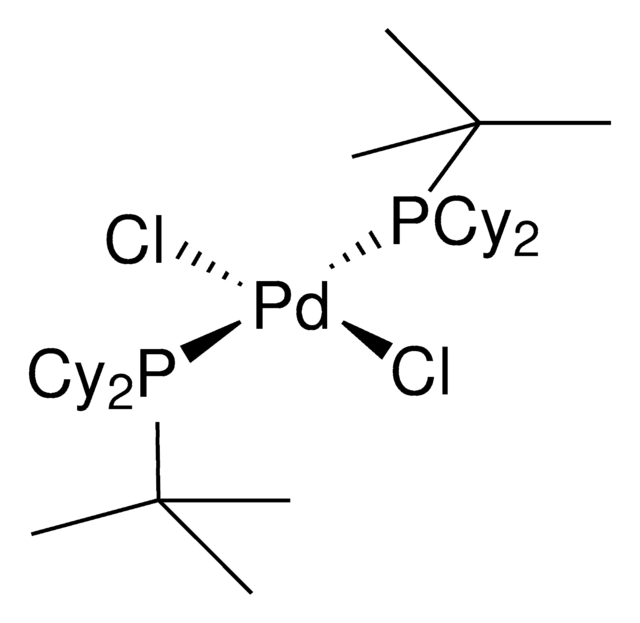651605
tert-Butyldicyclohexylphosphine
97%
Synonym(s):
Dicyclohexyl-tert-butylphosphine
About This Item
Recommended Products
Assay
97%
reaction suitability
reaction type: Buchwald-Hartwig Cross Coupling Reaction
reaction type: Heck Reaction
reaction type: Hiyama Coupling
reaction type: Negishi Coupling
reaction type: Sonogashira Coupling
reaction type: Stille Coupling
reaction type: Suzuki-Miyaura Coupling
reagent type: ligand
density
0.939 g/mL at 25 °C (lit.)
functional group
phosphine
SMILES string
CC(C)(C)P(C1CCCCC1)C2CCCCC2
InChI
1S/C16H31P/c1-16(2,3)17(14-10-6-4-7-11-14)15-12-8-5-9-13-15/h14-15H,4-13H2,1-3H3
InChI key
MQYZHXLHUNLBQH-UHFFFAOYSA-N
General description
Application
- Intermolecular palladium-catalyzed arylation of electron-rich, five-membered heterocycles by aryl chlorides.
- Palladium-catalyzed ortho-arylation of benzoic acids by aryl chloride.
Signal Word
Danger
Hazard Statements
Precautionary Statements
Hazard Classifications
Pyr. Liq. 1
Storage Class Code
4.2 - Pyrophoric and self-heating hazardous materials
WGK
WGK 3
Flash Point(F)
Not applicable
Flash Point(C)
Not applicable
Personal Protective Equipment
Certificates of Analysis (COA)
Search for Certificates of Analysis (COA) by entering the products Lot/Batch Number. Lot and Batch Numbers can be found on a product’s label following the words ‘Lot’ or ‘Batch’.
Already Own This Product?
Find documentation for the products that you have recently purchased in the Document Library.
Our team of scientists has experience in all areas of research including Life Science, Material Science, Chemical Synthesis, Chromatography, Analytical and many others.
Contact Technical Service









